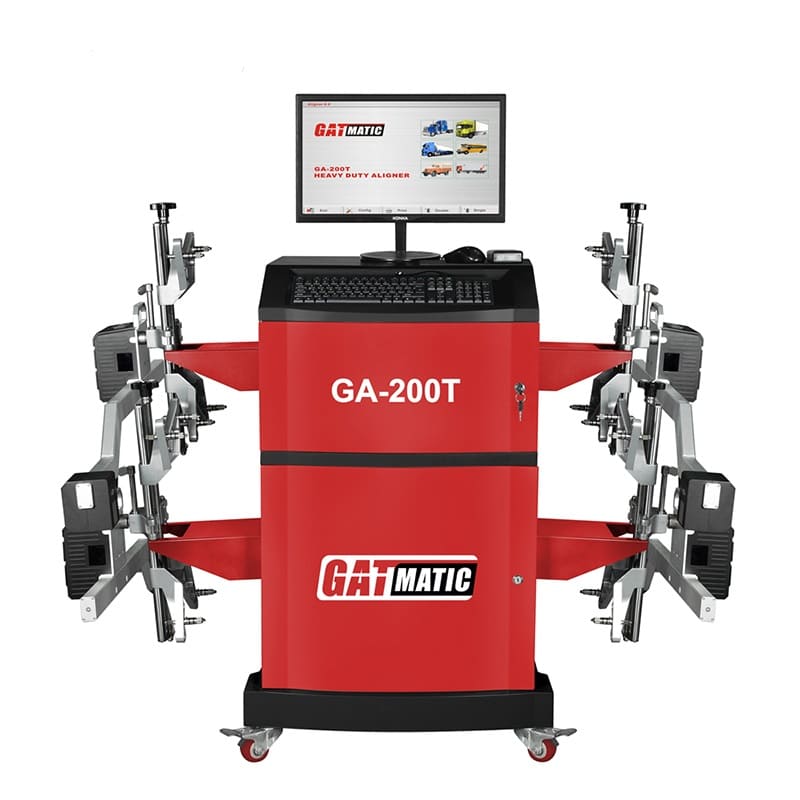How often should a wheel alignment be done on a truck?
In the world of heavy-duty trucks and commercial vehicles, proper maintenance is key to ensuring safety, efficiency, and longevity. One often overlooked but crucial aspect of maintenance is wheel alignment. How often should a wheel alignment be done on a truck? In this comprehensive guide, we’ll delve into the importance of wheel alignment, signs that indicate it’s time for one, and the recommended frequency for this essential maintenance task.
I. Understanding Wheel Alignment
Before we discuss the ideal frequency for wheel alignments on trucks, let’s first understand what wheel alignment is. Wheel alignment, also known as tire alignment, refers to the adjustment of the angles of the wheels so that they are perpendicular to the ground and parallel to each other. Proper alignment ensures that the tires wear evenly and that the vehicle travels straight without pulling to one side.
The Impact of Misalignment
Misalignment may seem like a minor issue, but it can have significant consequences for a truck and its operator:
- Tire Wear: Misalignment causes uneven tire wear, reducing the lifespan of the tires and increasing operational costs.
- Decreased Fuel Efficiency: Poor alignment leads to increased rolling resistance, resulting in higher fuel consumption.
- Handling and Safety: Trucks with misaligned wheels are challenging to control, increasing the risk of accidents, especially in adverse weather conditions.
Now, let’s explore how often a wheel alignment should be performed on a truck to mitigate these issues.
II. Recommended Frequency for Wheel Alignment
Determining the optimal frequency for wheel alignments on trucks depends on several factors:
1. Manufacturer Recommendations
Most truck manufacturers provide guidelines on the recommended frequency of wheel alignments. It’s essential to consult your vehicle’s manual for specific recommendations, as they can vary between different makes and models.
2. Usage Patterns
The type of loads your truck carries and the conditions it operates in can affect alignment frequency. Trucks that frequently haul heavy loads or operate on rough terrain may require more frequent alignments.
3. Visual Inspection
Regular visual inspections can help identify alignment issues. If you notice any of the following signs, it’s time to schedule an alignment:
- Uneven tire wear
- Steering wheel off-center when driving straight
- The truck pulling to one side
- Vibration in the steering wheel
4. Maintenance Schedule
Incorporate wheel alignment into your routine maintenance schedule. Many truck owners opt for an alignment every 12,000 to 15,000 miles or every six months, whichever comes first.
Conclusion
Maintaining proper wheel alignment on your truck is vital for safety, efficiency, and cost savings. While the frequency of alignments may vary, it’s crucial to follow manufacturer recommendations, consider usage patterns, conduct visual inspections, and integrate alignment into your maintenance schedule. Regular alignment ensures that your truck performs at its best, reduces tire wear, and enhances overall safety.
Frequently Asked Questions (FAQs)
- How can I tell if my truck’s wheels are misaligned? Visual cues include uneven tire wear, steering wheel misalignment, and a tendency to pull to one side.
- Can I do a wheel alignment myself? While some truck owners attempt DIY alignments, it’s recommended to have a professional perform this task for precision and safety.
- What’s the cost of a truck wheel alignment? Costs vary depending on the service provider and the complexity of the alignment. On average, expect to pay between $75 and $200.
- Are there any DIY methods to check wheel alignment at home? Some basic methods involve using a string or measuring tape to check if the front and rear tires are aligned. However, professional alignment is more accurate.
- How long does a typical truck wheel alignment take? A professional alignment usually takes about one to two hours, but this can vary depending on the extent of the misalignment and the technician’s expertise.
Get Access Now: https://www.gat-matic.com
In conclusion, maintaining proper wheel alignment is essential for the overall health and safety of your truck. By following manufacturer recommendations and regularly inspecting your vehicle, you can ensure that your truck’s wheels remain in alignment, contributing to smoother rides, better fuel efficiency, and longer tire life.
Describe Your Needs In Detail!
We will carefully evaluate your needs and give professional solutions.



